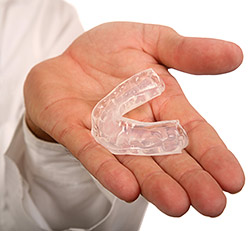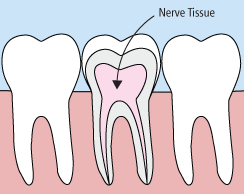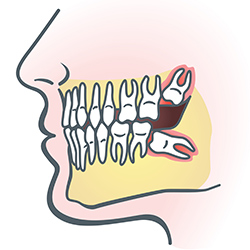Common Procedures
Topics on this page
Regular Exams and Cleanings
Regular exams are an important part of maintaining your child's oral health. During your child’s regular exam, we will:
- Make x-rays to check for any problems that may not be seen or felt
- Look for cavities or any other signs of tooth decay
- Inspect the teeth and gums for gingivitis and signs of periodontal disease
- Evaluate your child’s bite and the alignment of the teeth
- Perform a thorough teeth cleaning and apply fluoride varnish
Your child’s exam will take about 30 minutes. Each regular exam includes a detailed teeth cleaning, in which we will clean, polish, and rinse the teeth to remove any calculus and plaque that have built up on the tooth’s surface.
Visiting our office every six months gives you the chance to talk to the doctor about any questions you may have about your child’s oral health. Regular exams are offered by appointment only, so please contact our practice today to schedule your child’s next dental exam and teeth cleaning.
Crowns
 Crowns are a restorative procedure used to remove severe tooth decay and strengthen a tooth. Crowns are most often used for teeth that are broken, worn, or have portions destroyed by tooth decay. Crowns are needed when there is insufficient tooth strength remaining to hold a filling.
Crowns are a restorative procedure used to remove severe tooth decay and strengthen a tooth. Crowns are most often used for teeth that are broken, worn, or have portions destroyed by tooth decay. Crowns are needed when there is insufficient tooth strength remaining to hold a filling.
A crown is a “cap” cemented onto an existing tooth that usually covers the portion of the tooth above the gum line. In effect, the crown becomes the tooth’s new outer surface. Crowns for baby teeth are commonly made from stainless steel and may have a tooth-colored esthetic coating.
Extractions
 There are times when it is necessary to remove a tooth. A tooth may be infected or have so much decay that it puts the surrounding teeth and jaw at risk. Sometimes, a baby tooth has long roots that prevent it from falling out as it should, and the tooth must be removed to make way for the permanent tooth to erupt. Orthodontic treatment or problems with a wisdom tooth can also require removal of a tooth.
There are times when it is necessary to remove a tooth. A tooth may be infected or have so much decay that it puts the surrounding teeth and jaw at risk. Sometimes, a baby tooth has long roots that prevent it from falling out as it should, and the tooth must be removed to make way for the permanent tooth to erupt. Orthodontic treatment or problems with a wisdom tooth can also require removal of a tooth.
The root of each tooth is encased within the jawbone in a “tooth socket,” and the tooth is held in that socket by a ligament. In order to extract a tooth, the dentist must expand the socket and separate the tooth from the ligament holding it in place. While this procedure is typically very quick, it is important to share with your dentist any concerns or preferences for sedation; we want to make sure your child is as comfortable as possible.
Fillings
 Fillings are performed to remove and replace small areas of tooth decay and can be used as a conservative way to repair slightly chipped teeth. Our office typically uses tooth-colored composite resin materials to bond to the tooth structure and to mimic the appearance of your child’s natural tooth.
Fillings are performed to remove and replace small areas of tooth decay and can be used as a conservative way to repair slightly chipped teeth. Our office typically uses tooth-colored composite resin materials to bond to the tooth structure and to mimic the appearance of your child’s natural tooth.
Fluoride
 Fluoride is effective in preventing cavities and tooth decay. A fluoride varnish treatment in a dentist’s office takes just a minute. After the treatment, your child may be asked not to rinse, eat, or drink for at least 30 minutes in order to allow the teeth to absorb the fluoride. Depending on your child’s oral health or the doctor’s recommendation, a fluoride treatment may be required every three, six, or 12 months.
Fluoride is effective in preventing cavities and tooth decay. A fluoride varnish treatment in a dentist’s office takes just a minute. After the treatment, your child may be asked not to rinse, eat, or drink for at least 30 minutes in order to allow the teeth to absorb the fluoride. Depending on your child’s oral health or the doctor’s recommendation, a fluoride treatment may be required every three, six, or 12 months.
Mouthguards
 Whether your child wears braces or not, protecting his or her smile while playing sports is essential. Mouthguards help protect the teeth and gums from injury. If your child participates in any kind of full-contact sport, the American Dental Association recommends that he or she wear a mouthguard. Choosing the right mouthguard is essential. There are three basic types of mouthguards: the pre-made mouthguard, the “boil-and-bite” fitted mouthguard, and a custom-made mouthguard from the dentist. When you choose a mouthguard, be sure to pick one that is tear-resistant, comfortable and well-fitted for your mouth, easy to keep clean, and does not prevent your child from breathing properly. Your dentist can show your child how to wear a mouthguard properly and how to choose the right mouthguard to protect his or her smile.
Whether your child wears braces or not, protecting his or her smile while playing sports is essential. Mouthguards help protect the teeth and gums from injury. If your child participates in any kind of full-contact sport, the American Dental Association recommends that he or she wear a mouthguard. Choosing the right mouthguard is essential. There are three basic types of mouthguards: the pre-made mouthguard, the “boil-and-bite” fitted mouthguard, and a custom-made mouthguard from the dentist. When you choose a mouthguard, be sure to pick one that is tear-resistant, comfortable and well-fitted for your mouth, easy to keep clean, and does not prevent your child from breathing properly. Your dentist can show your child how to wear a mouthguard properly and how to choose the right mouthguard to protect his or her smile.
Nightguards
 If your child often wakes up with jaw pain, earaches, or headaches, or if you see your child clenching or grinding his or her teeth, your child may have a common condition called “bruxism”. Many people do not even know that they grind their teeth, as it often occurs when one is sleeping. If not corrected, bruxism can lead to broken teeth, cracked teeth, or even tooth loss.
If your child often wakes up with jaw pain, earaches, or headaches, or if you see your child clenching or grinding his or her teeth, your child may have a common condition called “bruxism”. Many people do not even know that they grind their teeth, as it often occurs when one is sleeping. If not corrected, bruxism can lead to broken teeth, cracked teeth, or even tooth loss.
There is an easy, non-invasive treatment for bruxism: nightguards. Nightguards are an easy way to prevent the wear and damage that teeth-grinding causes over time. Custom-made by a dentist from soft material to fit the teeth, a nightguard is inserted over your child’s top or bottom arch and prevents contact with the opposing teeth.
Root Canals
 In the past, if your child had a permanent tooth with a diseased nerve, he or she would probably lose that tooth. Today, with a special dental procedure called “root canal treatment”, your child’s tooth can be saved. When a tooth has a deep cavity, bacteria can enter the pulp tissue and germs can cause an infection inside the tooth. If left untreated, an abscess may form. If the infected tissue is not removed, pain and swelling can result. This can not only injure your child’s jawbones, but it is also detrimental to his or her overall health.
In the past, if your child had a permanent tooth with a diseased nerve, he or she would probably lose that tooth. Today, with a special dental procedure called “root canal treatment”, your child’s tooth can be saved. When a tooth has a deep cavity, bacteria can enter the pulp tissue and germs can cause an infection inside the tooth. If left untreated, an abscess may form. If the infected tissue is not removed, pain and swelling can result. This can not only injure your child’s jawbones, but it is also detrimental to his or her overall health.
Root canal treatment may require multiple visits. During treatment, the dentist will remove the unhealthy pulp tissue. Next, the interior of the tooth will be cleaned and sealed. Finally, a filling material is placed in the roots. Your doctor may suggest placing a crown to strengthen and protect the tooth from breaking. As long as your child continues to care for his or her teeth and gums with regular brushing, flossing, a balanced diet, and regular dental checkups, the restored tooth can last for decades.
Sealants
 Sometimes brushing is not enough, especially when it comes to those hard-to-reach spots in your child’s mouth. It is difficult for a toothbrush to get in between the small cracks and grooves on the chewing surface of your child’s teeth. If left alone, those tiny areas can develop tooth decay. Sealants give your child’s teeth extra protection against decay and help prevent cavities.
Sometimes brushing is not enough, especially when it comes to those hard-to-reach spots in your child’s mouth. It is difficult for a toothbrush to get in between the small cracks and grooves on the chewing surface of your child’s teeth. If left alone, those tiny areas can develop tooth decay. Sealants give your child’s teeth extra protection against decay and help prevent cavities.
Dental sealants are a plastic resin that bonds and hardens in the deep grooves on your child’s tooth’s surface. When a tooth is sealed, the tiny grooves become smooth and are less likely to harbor food and plaque. With sealants, brushing your child's teeth becomes easier and more effective against tooth decay. Sealants can breakdown over time, but it is fairly common to see adults with sealants still intact from their childhood.
Wisdom Teeth
 Wisdom teeth are third molars found in the very back of your child’s mouth. These teeth usually erupt in the mouth in late teens or early 20s, but they may become impacted (fail to erupt) due to lack of room in the jaw or angle of entry. When a wisdom tooth is impacted, it may need to be removed. If it is not removed, your child may develop gum tenderness, swelling, or even severe pain. Impacted wisdom teeth that are partially or fully erupted tend to be quite difficult to clean and are susceptible to tooth decay, recurring infections, and even gum disease.
Wisdom teeth are third molars found in the very back of your child’s mouth. These teeth usually erupt in the mouth in late teens or early 20s, but they may become impacted (fail to erupt) due to lack of room in the jaw or angle of entry. When a wisdom tooth is impacted, it may need to be removed. If it is not removed, your child may develop gum tenderness, swelling, or even severe pain. Impacted wisdom teeth that are partially or fully erupted tend to be quite difficult to clean and are susceptible to tooth decay, recurring infections, and even gum disease.
Wisdom teeth are typically removed in the late teens or early twenties because there is a greater chance that the tooth’s roots have not fully formed and the bone surrounding the teeth is less dense. These two factors can make extraction easier as well as shorten the recovery time.





